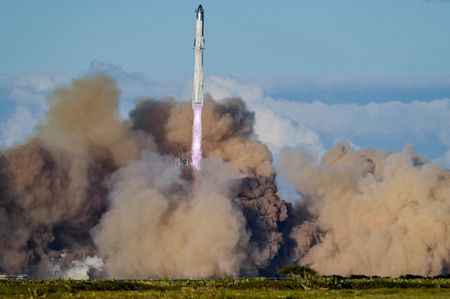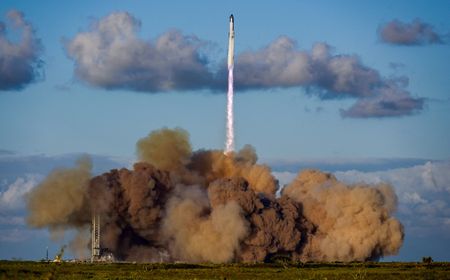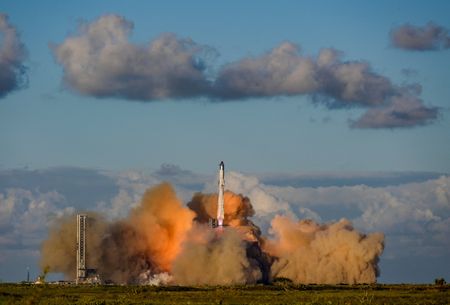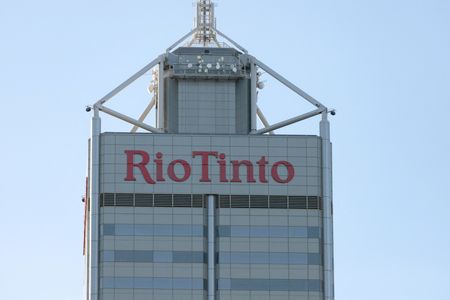By Joey Roulette
WASHINGTON (Reuters) -Elon Musk’s SpaceX launched its 11th Starship rocket from Texas on Monday and landed it in the Indian Ocean, the last flight before the company begins test-launching a new version of the giant rocket outfitted with more features for moon and Mars missions.
Starship, which includes the Starship upper stage stacked atop its Super Heavy booster, launched at 6:23 p.m. CT (2323 GMT) from SpaceX’s Starbase facilities. After sending the Starship stage to space, Super Heavy returned for a soft water landing in the Gulf of Mexico 7 minutes after liftoff, testing a landing engine configuration before blowing itself up.
Its last mission, in August, ended a streak of testing failures earlier this year. Monday’s flight was similar to the previous one, again deploying a batch of mock Starlink satellites, briefly re-lighting its engines in space and testing new heat shield tiles during its blazing hot return from space before splashing down west of Australia.
Acting NASA Administrator Sean Duffy said on X the mission was “another major step toward landing Americans on the Moon’s south pole.”
SpaceX, in future tests, expects to launch a more advanced Starship prototype tailored with upgrades essential for long-duration missions in space, the company said on Monday.
That includes docking adapters and other hardware changes key to orbital refueling, a complex process involving two Starships docking in orbit to transfer hundreds of tons of super-cooled propellant.
The upgraded prototype “is really the vehicle that could take humans to the Moon and Mars,” SpaceX President Gwynne Shotwell said at a conference in Paris last month. “So that’s really the one we want to get to.”
Shotwell said she expected that iteration of Starship to fly by year’s end or early next year. Musk, SpaceX’s CEO, has said he expects a refueling mission with two Starships to occur next year, a goal NASA in 2024 expected to happen this year.
Refueling is one of many remaining testing objectives required before the rocket carries humans to the lunar surface, which is scheduled for 2027.
Multiple Starship tankers are needed to fill up one Starship with enough fuel for a moon landing under SpaceX’s proposed moonshot plan.
That is part of a more than $3 billion contract SpaceX won in 2021 under NASA’s Artemis program, the U.S. effort to put humans on the moon for the first time since 1972. SpaceX’s award puts it at the center of a race to the moon between the U.S. and China, which is aiming for its own crewed landing in 2030.
A panel of NASA safety advisers warned last month that meager progress in developing elements of the rocket’s lunar lander design risked setting back the U.S. moon effort by years. Sticking a test-landing on the moon’s rough surface is another top priority SpaceX must achieve.
Starship, the most powerful rocket ever launched and many times larger than SpaceX’s workhorse Falcon 9, is also key for launching heavier Starlink satellites essential to the company’s lucrative mobile broadband goals. It is also the centerpiece of Musk’s vision to eventually send humans and cargo to Mars.
(Reporting by Joey Roulette; Additional reporting by Cassell Bryan-Low in Paris; Editing by Richard Chang and Jamie Freed)













